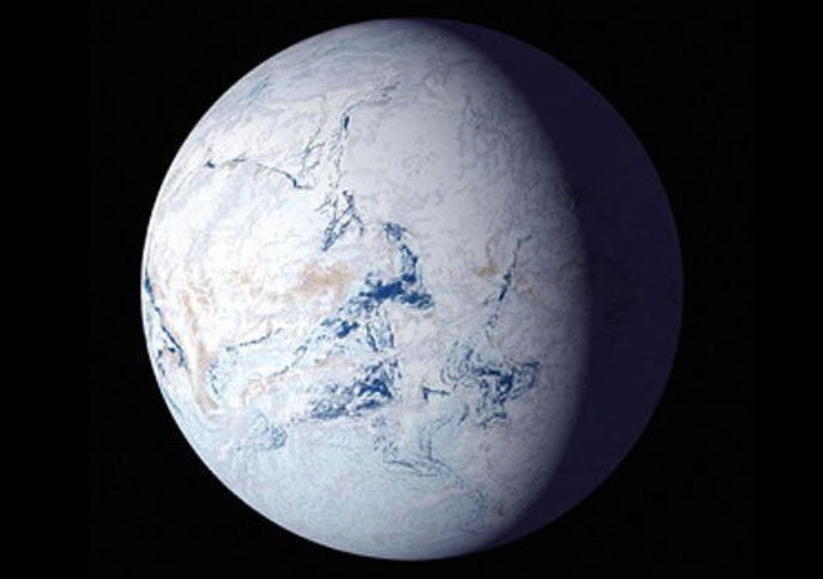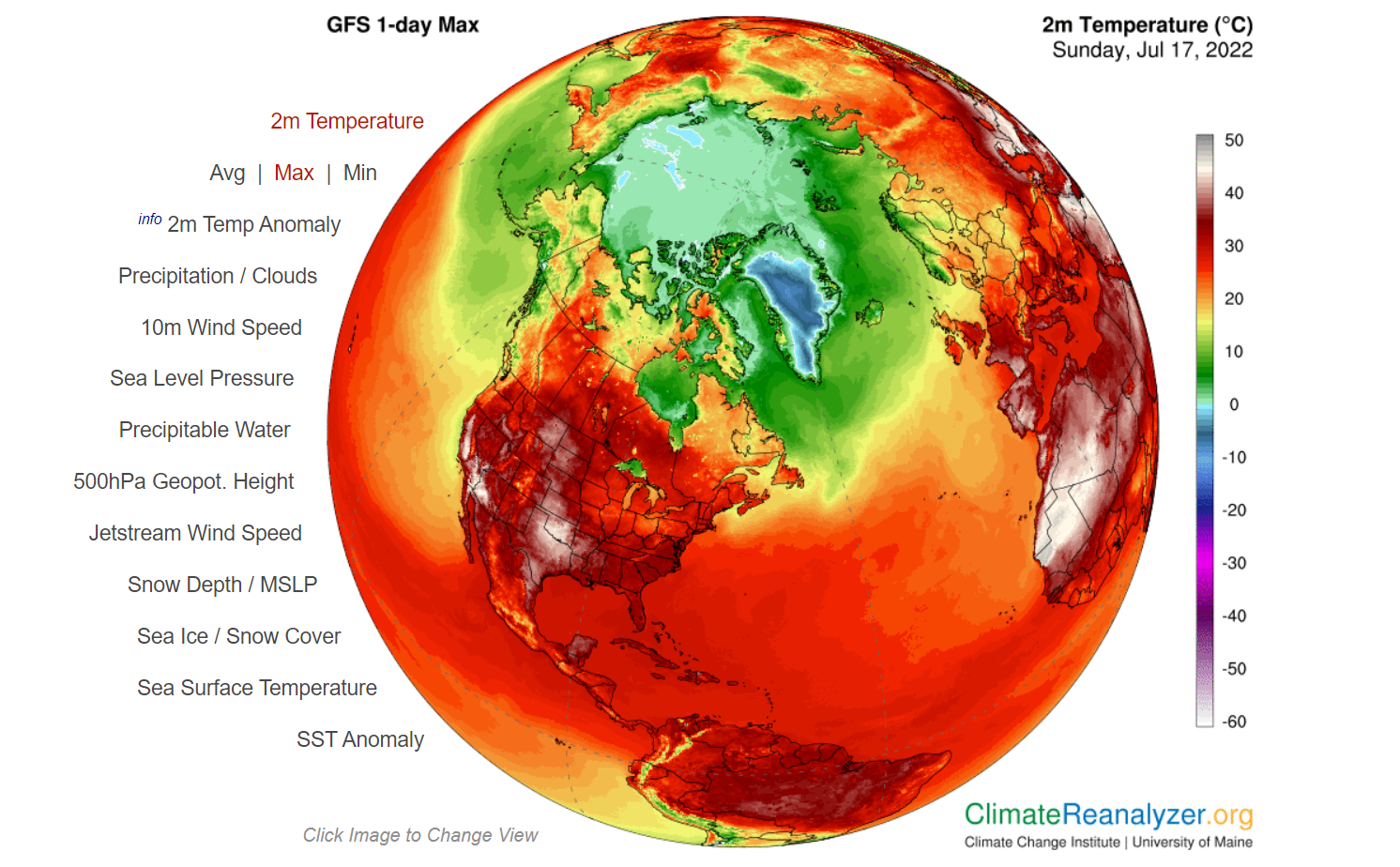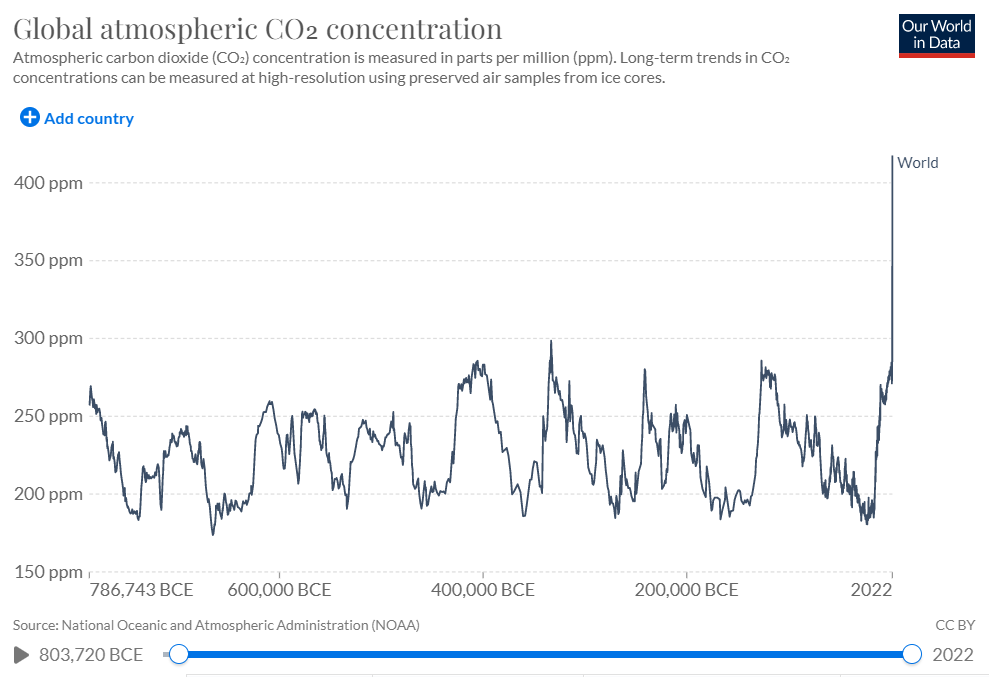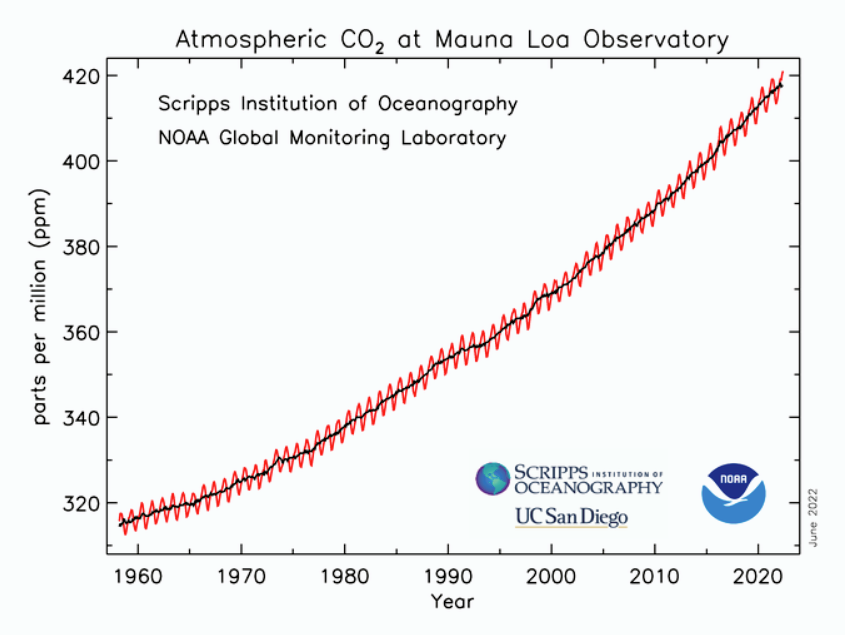The Earth’s Climatic condition has always been changing, sometimes slowly over many hundreds of thousands of years or even millions of years and sometimes very abruptly owing to volcanic or other geological activity. During these natural cycles of Climate Change, there have been many Ice Ages, and even times in the Earth’s History when the entire planet has been covered with ice for millions of years. We sometimes refer those periods of intense glaciation as ‘Snowball Earth’. Human Beings could not have survived during such a period of the Earth’s history.
What is the Cause of Climate Change

But equally humanity will not be able to survive on world that is literally on fire.
The natural processes of Climate Change are now well studied and better understood, and we have come to accept that fact that we can do nothing to prevent them as and when they occur, and we have come to respect the Biosphere and its balance, which is essential to all life, not just our own.
If we put an apple in the cooler and take it out after a while, there will be a very thin layer of water condensation covering it. This extremely thin surface layer is analogous to the relative thickness of the biosphere on the Earth, which we have to protect at all costs, for the consequences of failure are grave indeed.
The first ancestors of Humanity have been on Earth for some millions of years, but the modern form of humans only evolved about 200,000 years ago. The last glacial period began about 100,000 years ago and lasted until 25,000 years ago. Today we are in a warm interglacial period. Civilization as we know it is only about 6,000 years old, and industrialization started only in the 1800s. with the advent of the Industrial Revolution.
There is now overwhelming evidence which shows that our planet has been getting warmer because of Anthropogenic changes due to man-made Climate Change . The warmest 20 years on record have been in the last 22 years according to the World Meteorological Organisation. The warmest four years were between 2015 to 2018. Global average temperatures are now 1℃ higher than they were in the pre-industrial era.
In a world of constantly changing climatic conditions, 1℃ does not seem very much, but we have already seen that the weather systems of the world are being severely disrupted. If these dramatic trends continue this disruption is set to worsen, with predictions of global temperatures increasing by as much as 3-5℃ by the year 2100.
The Nations of the World have recognised the threat that Climate Change now poses to our future. The is no ‘Planet B’. We need to take action together, and now. The current world temperature map looks like this:

The Greenhouse Effect
Earth’s atmosphere is composed of about 78 percent nitrogen, 21 percent oxygen, 0.9 percent argon, and 0.1 percent other gases. Trace amounts of carbon dioxide, methane, water vapor, and neon are some of the other gases that make up the remaining 0.1 percent.
That is not very much carbon dioxide at all, so how can that be the cause of climate change ?
In fact the concentration of carbon dioxide, which is usually expressed as ‘parts per million’ (ppm), does change according to Earth’s natural cycles, such as volcanic activity and changes in the orbit around the sun. This orbit is eccentric according to an approximate 100,000 year cycle. There are other changes also, such as the precession (or wobble) of the Earth’s daily rotation. Taking all together, these regular changes to the Earth’s rotation and orbit around the sun are referred to as the ‘Milankovitch Cycles’.
Axial precession of the Earth’s rotation is shown here:
The small changes set in motion by Milankovitch cycles operate separately and together to influence Earth’s climate over very long timespans, leading to larger changes in our climate over tens of thousands to hundreds of thousands of years.
Milankovitch assumed changes in radiation at some latitudes and in some seasons are more important than others to the growth and retreat of ice sheets. In addition, it was his belief that obliquity was the most important of the three cycles for climate, because it affects the amount of insolation in Earth’s northern high-latitude regions during summer.
The variation in the amount of the sun’s energy reaching the surface of the Earth causes corresponding changes in the flora concentrations, and since flora uses carbon dioxide as part of the process of photosynthesis those carbon dioxide concentrations also change according natural cycles.
Milankovitch calculated that Ice Ages occur approximately every 41,000 years. Subsequent research confirms that they did occur at 41,000-year intervals between one and three million years ago. But about 800,000 years ago, the cycle of Ice Ages lengthened to 100,000 years, matching Earth’s eccentricity cycle.
Through an investigation of carbon dioxide concentrations in ice cores going back hundreds of thousands of years, it has been possible to build up an accurate picture of the variations :

The natural variations in carbon dioxide concentrations over the last 800,000 years has been between 180 – 300 ppm. This cycle has been stable until – the start of the Industrial revolution, as seen by the massive increase in concentrations in the mid-19th century.
In the chart here we see consistent fluctuations in carbon dioxide concentrations; these periods of rising and falling carbon dioxide coincide with the onset of ice ages (low carbon dioxide) and interglacials (high carbon dioxide).
Current concentrations show a relentless rise :

To slow down – with the eventual aim of halting – rising global temperatures, we need to stabilize concentrations of carbon dioxide and other so-called greenhouse gases in Earth’s atmosphere. This link between global temperatures and greenhouse gas concentrations – especially CO2 – has been true throughout Earth’s history. It’s important to note that there is ‘lag’ between atmospheric concentrations and final temperature rise – this means that when we do finally manage to stabilize atmospheric concentrations, temperatures will continue to slow rise for years to decades.
The relative concentrations to increase of carbon dioxide concentrations can be seen in this ‘broomstick’ plot:

This interactive plot is available here.

